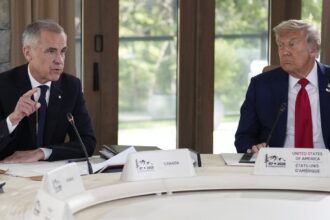In the shadows of Canada’s pandemic response lies a $300 million facility that has never treated a single patient. The federal government has quietly begun seeking buyers for its Montreal mobile health unit, constructed at the height of COVID-19 fears but left completely unused as the pandemic receded.
The 144-bed temporary hospital, hastily built in a converted warehouse near the Pierre Elliott Trudeau International Airport, stands as a striking symbol of pandemic-era procurement decisions now facing increased scrutiny. Public Services and Procurement Canada confirmed last week they’re now actively marketing the facility to potential buyers, hoping to recoup at least some of the substantial investment.
“The mobile health unit was constructed as a prudent contingency measure during a period of significant uncertainty,” explained Jean-François Arsenault, spokesperson for Public Services and Procurement Canada. “While ultimately not required for its intended purpose, the decision reflected the government’s commitment to preparedness during an unprecedented public health crisis.”
Documents obtained through access to information requests reveal the government spent approximately $300 million on the facility’s development, staffing, and maintenance between 2020 and 2023. The contract, awarded to SNC-Lavalin without competitive bidding under emergency procurement rules, has raised questions about fiscal oversight during crisis response.
Conservative MP Michael Barrett, the party’s health critic, called the unused hospital “a monument to Liberal mismanagement” during a heated House of Commons exchange last Thursday. “Canadians struggled to access healthcare throughout the pandemic while hundreds of millions were wasted on a facility that never opened its doors,” Barrett stated.
Health policy experts offer a more nuanced perspective. Dr. Katharine Smart, former president of the Canadian Medical Association, suggests such investments should be evaluated within their historical context.
“In spring 2020, healthcare systems worldwide faced unprecedented uncertainty,” Smart told CO24 in an interview. “While it’s easy to criticize these decisions in retrospect, contingency planning during potential catastrophic scenarios necessarily involves investments that may ultimately prove unnecessary.”
The Montreal facility is not unique. Several provinces constructed similar emergency facilities, though most saw at least limited use. Ontario’s mobile units briefly treated overflow patients during the pandemic’s peak, while British Columbia’s emergency facilities were partially utilized during subsequent waves.
The federal government has not disclosed its asking price for the Montreal unit but confirmed that proceeds would return to general revenue. Industry analysts suggest the specialized nature of the facility may limit potential buyers to healthcare organizations or provincial governments seeking to address current hospital capacity challenges.
This situation emerges as Canada’s healthcare system continues struggling with capacity issues and staffing shortages. Emergency room wait times in major urban centers have reached record highs, prompting questions about whether resources devoted to unused pandemic facilities might have been better directed toward addressing structural healthcare deficiencies.
Finance Ministry officials defend the expenditure as appropriate risk management during unprecedented circumstances. “During a once-in-a-century pandemic, the greater risk was being unprepared rather than over-prepared,” noted Deputy Finance Minister Michael Sabia in committee testimony last month. “These decisions were made based on the best public health information available at the time.”
As Ottawa now attempts to unload this expensive pandemic relic, Canadians are left pondering a challenging question: In future crises, how can our government better balance immediate emergency preparedness with fiscal responsibility and long-term healthcare planning?























